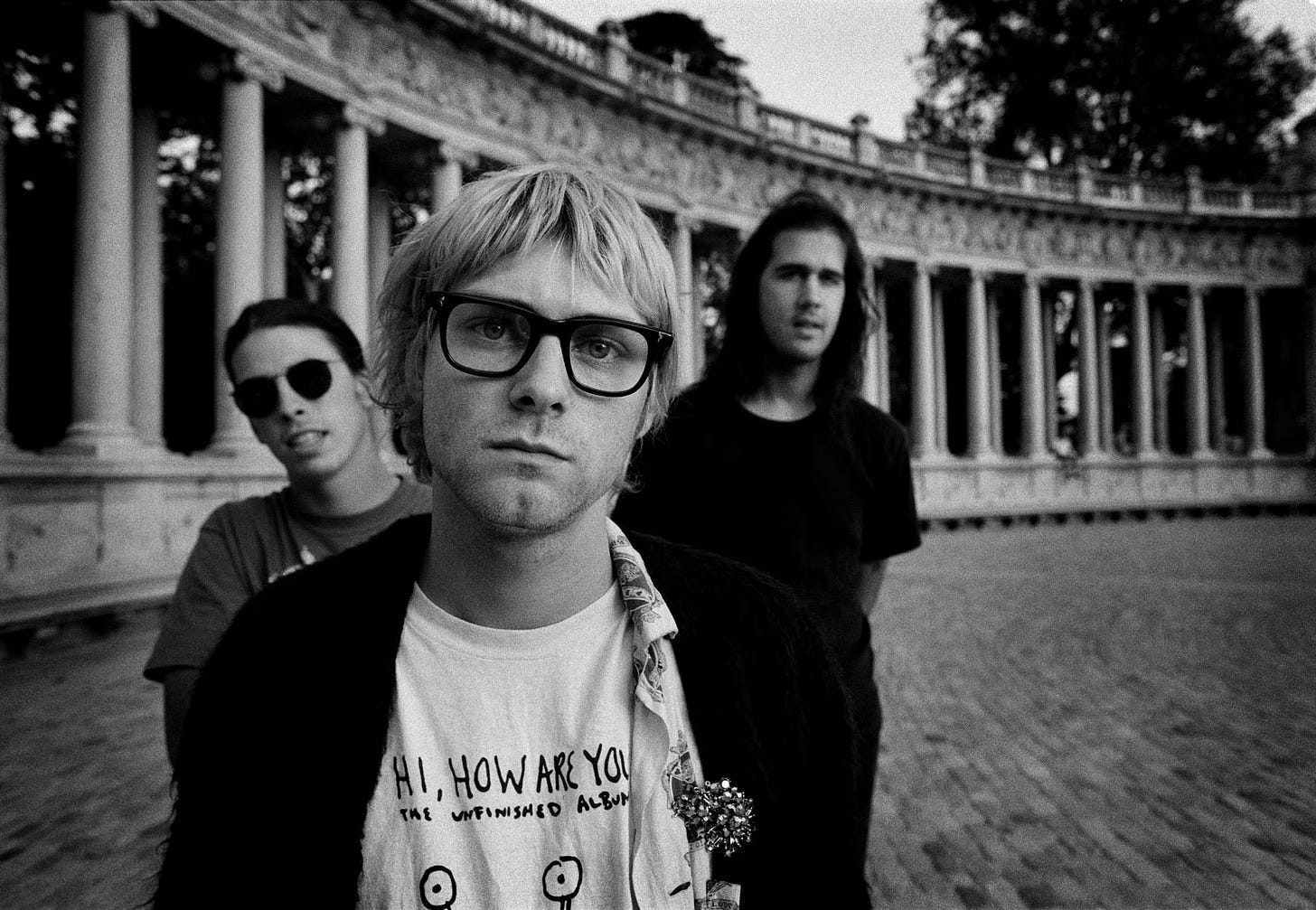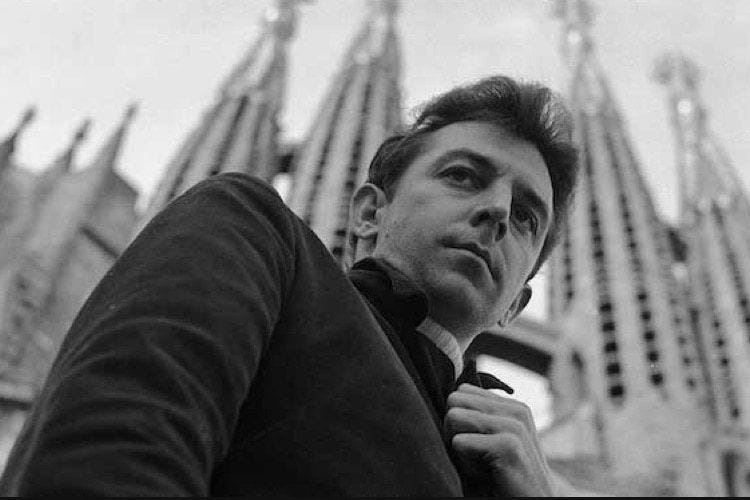Nostalgia for the Present
The Great Generational Swindle
There are many ways to interpret this time in which we live.
Last Saturday night, the weather was rainy but surprisingly warm. I checked out what I found to be an unbearably pretentious performance at a gallery on Orchard Street, then wandered around Dimes Square, a hipster utopia. Well-dressed and carefully coiffed Gen Zers and Millennials thronged a profusion of art openings, restaurants, rock shows, book stores, “avant-garde” performances, and so on.
The Lower East Side still swarms with young people who come to the city to endure extortionist rents and absurdly inflated prices, pursuing the dream of creative fulfillment and artistic success. At cafes and bars, I overhear them having the same passionate conversations—about Kubrick, Camus, Patti Smith, conceptual art, and so on—that my friends and I had at their age (actually, in that sense, I haven’t aged at all). Of course, hordes of aspiring corporate hacks, former frat boys and sorority sisters, mix in with the creative types, like dusky moths attracted to any luminosity. Mostly, I sympathize with the kids who remind me of my younger self, nurturing their artistic / poetic dreams, trying to cultivate some evanescent quality of soul, struggling against the dictates of the market.
I want to express how very worried and deeply sad I feel for the younger generations—terrified, actually, on their behalf. I want to dive in here to explain why I feel such concern. And, accompanying it, I will admit to sorrow, shame, and so on.
While I dislike the tendency to define and contrast generations against each other, I identify with archetypal aspects of my Generation X: From the start we were a moody, angsty crew, too late for the utopian swirls of the Sixties or even the cleansing nihilism of the Punk Rock era. When we entered the workforce, the Baby Boomers—the most narcissistic generation in history, bearing the greatest responsibility for the ecological meltdown which they might have forestalled—kept a tight clamp on the levers of power in all cultural and commercial fields. They weren’t going anywhere for a very long time.
We arrived on the scene too early for the tech revolution and “dot com” explosion, which upended the economic model for many younger people. Suddenly, millennial techies—and even those who wrote or made art that appealed to the new tech overlord class—had massive financial power and cultural cache. On the plus side, Gen X reached maturity before the psycho-cognitive rewiring induced by nonstop social media. Yes, we dealt with severe depression (I was friends with Prozac Nation author Elizabeth Wurtzel, who built a clever brand out of it) as well as drug and alcohol addiction (one of my friends died of a heroin overdose with the galleys of his soon-to-be-published first novel spread in front of him on his desk). But ADHD, pharmacology, and synthetic opiates hadn’t become so ubiquitous.
As Gen X, we were disaffected (Nirvana was anthemic, Cobain’s senseless suicide a defining moment for our people), at times anguished, and still quite analog. Today, if Generation Xers can step into authentic maturity (something the Baby Boomers never did), we could provide support for the younger generations as they face the deepening abyss of the engulfing planetary Holocaust. Like them, we knew disaffection and despair early on. We never quite got our day in the sun, and we got used to it.
Perhaps “the deepening abyss of the engulfing planetary Holocaust” sounds too harsh? As a writer with a relatively modest public following, I try to be careful not to alienate too many readers, too quickly. But I don’t know what else to call it at this point. Even that—the mass extinction of almost all other forms of life besides rats and roaches—isn’t what concerns me most, if I am honest. What most worries me today is the likelihood—if not the stone-cold inevitability—that our entire way of life is going to be permanently, irrevocably transformed, quite soon (within two to five years?), by an energy and resource-depletion crisis that becomes our new, permanent, defining reality.
After all, everything we think about as culture exists due to the surplus production of energy, food, and goods. This surplus allows masses of entitled people to live in dense cities without focusing on the more dank and brutal tasks of maintaining this world. Instead, we can spend our days manipulating symbol systems within virtual displays, or spraying paint onto canvas, or turning Tolstoy into a space opera, or whatever.
We also, in this society, grow up with this concept that there exist classes of experts who have mastery over their different domains. Because of this, the cultural/artistic people don’t have to waste time and psychic energy to try to understand basic things like how electricity works, or how the financial system works, or whether there is enough oil and natural gas to keep the economy going indefinitely. They can, instead, reflect on such things obliquely, via art.
In fact, it was already a number of decades ago that I lost my faith in the “art and culture racket” or what Terry Southern called “the Quality Lit Game.” Before then, I was making a sort of living as an art writer, penning columns on contemporary art for magazines like The Art Newspaper of London and Art in America, while co-editing Open City, an art and literary journal. I was very much part of “the scene.” Somehow I began to have this awful feeling that almost all of this cultural production was a kind of ego-ic distraction from a terrible something that our society did not want us to confront or think about.
One something, or perhaps a set of somethings?
Our society didn’t want us to see our wealth and privilege as a legacy of imperialist planetary conquest and ecosystemic ruin, which might inspire us to try to build something else. We also, as reductive scientific materialists who were ultimately nihilists, sought to distract ourselves from facing the inner core of meaninglessness and existential despair that artistic expression, numbing drugs or sexual excess could temporarily mask over.
I’ve written about all of this before: How my intensifying existential dread led me to re-explore psychedelics, to imbibe visionary plants in indigenous shamanic rituals in Gabon, Mexico, and Ecuador, as chronicled in my first book, Breaking Open the Head. That book was a modest breakthrough when it came out in 2002. It was the first book on psychedelics to be respectfully reviewed in The New York Times for a few decades. It has since been eclipsed by successive waves of new psychedelic literature and media, like the works of Michael Pollan and Hamilton Morris, who sort of followed my lead. Much as I followed the lead of the Beat Generation, who tried to excavate a “lost art or lost consciousness” back in the 1940s/50s.
Most of the recent literary and media offerings in the “psychedelic renaissance” elaborate on the now commonly-held paradigm of Neoliberal therapy culture — or, in Morris’s case, a detached Ahrimanic neuroscience—that ignores, or downplays, the paranormal, psychic, transcendent, occult, mystical, deeply weird aspects of the psychedelic experience.
Keep reading with a 7-day free trial
Subscribe to Liminal News With Daniel Pinchbeck to keep reading this post and get 7 days of free access to the full post archives.




